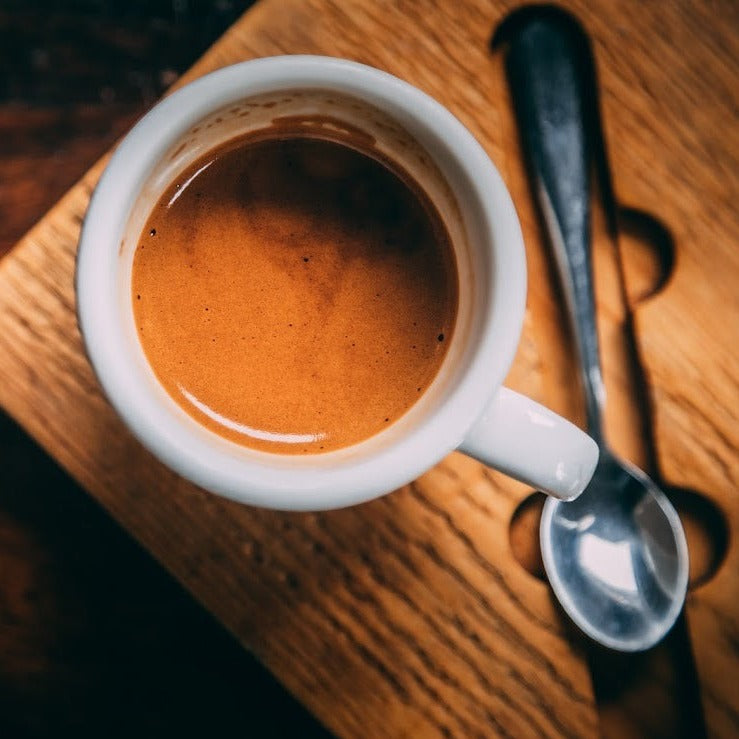Experience the Difference with Just-Roasted SOE Single Origin Espresso
Experience the Difference with Just-Roasted SOE Single Origin Espresso
Blog Article
Coffee Beans 101: Every Little Thing You Need to Find Out About Espresso and Blended Coffee Beans
When it comes to coffee, comprehending the subtleties of espresso and blended beans can change your daily cup. From the expanding process to roasting techniques, every step plays a duty in your coffee experience.
Understanding Coffee Beans: Types and Varieties
When diving into the world of coffee, understanding the kinds and ranges of coffee beans is crucial for every fanatic. Arabica beans are known for their smooth, intricate tastes and reduced high levels of caffeine content, making them a preferred among coffee connoisseurs.
Within these types, you'll discover various regional varieties, each bringing distinct characteristics. For circumstances, Ethiopian Yirgacheffe supplies bright floral notes, while Colombian beans provide a healthy flavor account. As you check out, keep in mind to take note of processing methods like washed or natural, as they can substantially affect the final taste. By familiarizing yourself with these beans and their flavors, you'll elevate your coffee experience and make more educated choices in your developing journey.
The Growing Process: From Seed to Bean
When you discover the trip of coffee, all of it beginnings with seed option strategies that set the foundation for quality. From there, farming and harvesting play important functions in making sure the beans grow. Ultimately, handling methods change those gathered cherries into the coffee beans you like.
Seed Option Methods
Choosing the ideal seeds is necessary for creating high-grade coffee beans, as it lays the structure for the entire expanding procedure. Pay focus to the seed's age and storage conditions, as fresh seeds have a tendency to sprout much better. Consider the illness resistance of different selections, as this can significantly affect your return.
Growing and Harvesting
As you nurture your coffee seeds right into thriving plants, recognizing the cultivation and harvesting process is crucial for accomplishing the best taste and high quality. Begin by growing your seeds in well-draining dirt, ideally in a shaded area to secure them from direct sunshine.
When it comes time to harvest, search for ripe cherries, which generally transform a vivid red. Hand-picking is often the most effective technique to assure just the ripest cherries are chosen. Timing is necessary; gathering too late or also early can influence the taste account of your beans. Embrace persistence and care, as this is where quality starts.

Handling Methods Described
When you've gathered your coffee cherries, the next necessary action is refining them to transform those vivid fruits into the beans you'll brew. In the dry procedure, you spread out the cherries out in the sun to dry, enabling the fruit to ferment and impart unique tastes to the beans. Understanding these techniques is vital to enjoying your coffee experience.
Toasting Methods: Exactly How Taste Is Created
When it involves roasting coffee beans, comprehending roast degrees is crucial to disclosing their one-of-a-kind flavors. Each roasting method effects the aroma and improves the flavor growth process, offering you a richer coffee experience. Allow's check out exactly how these elements collaborated to elevate your day-to-day brew.
Roast Degrees Described
Roast degrees play an important role in forming the taste account of your coffee. You'll delight in intense level of acidity and fruity notes when you pick a light roast. As you relocate to a medium roast, you'll see a balance of sweetness and intricacy, often highlighting delicious chocolate or sugar tastes. Dark roasts, on the other hand, provide strong, smoky characteristics with less acidity, making them abundant and robust. Each level arises from different roasting times and temperatures, influencing the beans' chemical make-up. By recognizing these degrees, you can better select a coffee that matches your taste choices. Explore different roasts to find which one reverberates with you, improving your total coffee experience and enjoyment.
Impact on Scent
The roast degree not only influences the taste of your coffee but also considerably affects its aroma. Each roasting strategy launches different volatile compounds, shaping exactly how your coffee smells. Furthermore, the quality of the beans plays a vital duty; newly roasted coffee releases a lot more fragrant oils, enhancing that luring scent.
Taste Development Process
As you explore the flavor advancement process, you'll uncover that toasting methods play a critical duty in shaping the taste account of your coffee. The roasting temperature level and time directly basics influence the acidity, sweetness, and anger of the beans. Light roasts keep even more of the bean's initial flavors, highlighting fruity and flower notes.
Coffee vs. Blended Coffee: Key Distinctions
Espresso and mixed coffee each deal one-of-a-kind experiences that accommodate various preferences and preferences. Coffee is a focused coffee made forcibly hot water with finely-ground coffee beans, leading to an abundant, bold taste and a velvety layer of crema on top. It's frequently taken pleasure in as a shot or used as a base for beverages like cappuccinos and lattes.
On the other hand, mixed coffee combines various beans from different areas, developing an extra well balanced flavor profile. You'll commonly locate blends that highlight acidity, sweetness, or body, making them flexible for various developing methods. While espresso concentrates on intensity, blended coffee may supply a broader variety of flavors that can alter with each sip.
Ultimately, your selection in between coffee and blended coffee come down to your individual choice. Whether you long for a quick shock or a leisurely cup, both alternatives have something scrumptious to use.

Developing Approaches: Opening the Perfect Cup
When it pertains to developing coffee, finding the right technique can transform your experience and elevate your cup. Each developing method has its distinct beauty and can significantly affect your coffee's flavor and aroma. As an example, using a French press allows you to take pleasure in a rich and full-bodied mixture, while a pour-over technique provides a tidy, intense mug with unique tastes.
If you choose coffee, buying a high quality maker can assist you understand the art of pulling shots. Alternatively, for benefit, a single-serve hull system supplies rate without sacrificing taste.
Do not neglect about cool mixture, which provides a smooth, less acidic coffee perfect for warm days. Experiment with different methods to uncover what resonates with your taste buds.
Tasting Notes: Determining Flavor Profiles
How can you genuinely value your coffee if you informative post do not know what tastes to look for? Tasting notes are your overview to understanding the complex world of coffee. Some coffees might leave a chocolatey or caramel aftertaste, while others might have a brilliant, clean surface.
Think about the body of the coffee, too; is it airy and light or thick and syrupy? Don't fail to remember level of acidity; a bright level of acidity can include activity, while a low acidity could offer a smoother experience. By identifying these taste profiles, you'll grow your link with each cup, making coffee sampling a wonderful trip of discovery.

Tips for Picking and Keeping Coffee Beans
Choosing and keeping coffee beans effectively can significantly boost your developing experience. Beginning by selecting top quality beans that fit your preference - SOE.
Once you have your beans, save them in an impermeable container to stop direct exposure to wetness, air, and light. A dark, cool location functions best, so avoid keeping them in the fridge or freezer, as this can introduce dampness. Just grind the amount you need to keep freshness; entire beans retain taste longer than pre-ground coffee.
Finally, attempt to use your beans within 2 to four weeks after opening up for peak taste. Following these ideas will ensure your coffee remains enjoyable and savory, raising your day-to-day brew to new elevations.
Regularly Asked Concerns
For How Long Do Coffee Beans Remain Fresh After Toasting?
Coffee beans stay fresh for concerning two weeks after roasting - SOE. You must store them in a closed container, away from light and wetness. Afterwards, their flavor and scent begin to decrease substantially

Can I Mix Different Coffee Bean Varieties?
Definitely, you can blend different coffee bean ranges! Experimenting with blends can boost flavors and produce a distinct taste account. Just make certain to stabilize the staminas and features of each range for the very best results.
What Is the Perfect Grind Size for Coffee?
For coffee, you'll want a fine grind dimension, concerning the appearance of table salt. This allows ideal extraction, causing an abundant, savory shot. Experiment a bit to locate what matches your preference best!
Exactly How Does Elevation Affect Coffee Bean Flavor?
Elevation impacts coffee bean flavor by influencing the development rate and chemical make-up. Greater elevations bring about slower growth, which enhances acidity and intricacy, providing your coffee a vivid and unique taste you will not forget.
Exist Decaffeinated Versions of Coffee Beans?
Yes, there are decaffeinated variations of espresso beans. You can enjoy an abundant espresso taste without the caffeine kick. Simply seek "decaf" blends at your local coffee store or specialized shop.
Coffee Beans 101: Everything You Need to Know Concerning Coffee and Blended Coffee Beans.
When diving right into the world of coffee, recognizing the types and selections of coffee beans is vital for every lover.When it comes to roasting coffee beans, recognizing roast degrees is crucial to exposing their special tastes. Espresso is a focused Full Report coffee brewed by compeling hot water via finely-ground coffee beans, resulting in an abundant, strong taste and a luscious layer of crema on top.On the other hand, mixed coffee combines numerous beans from different regions, developing an extra well balanced taste profile.
Report this page